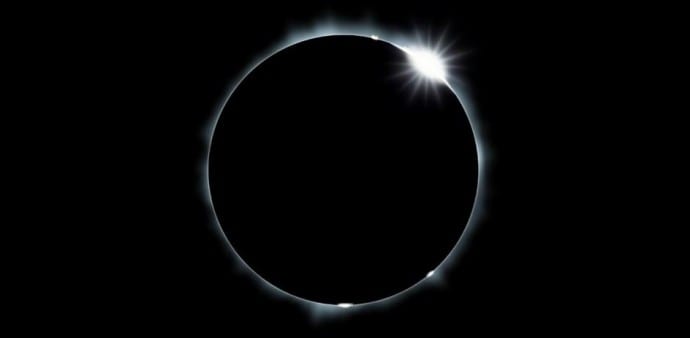Celestial spectacle : Total solar eclipse to take place on March 8-9
Depending on where you are in the world next week, some people are set to experience the dark shadow cast by the Moon that would be passing exactly between the Sun and Earth in the early hours of March 8 to 9. In other words, the sky will be in total darkness as a total solar eclipse is expected on the aforementioned dates.
A total solar eclipse occurs when the moon comes between the sun and Earth and casts the darkest part of its shadow, known as its umbra, on Earth. The darkest part of a total solar eclipse is almost as dark as night. Most of the world usually only encounters a partial solar eclipse, depending on when and where the eclipse takes place.
For example, a total solar eclipse will actually take place on March 9, 2016. However, the entire eclipse will only be visible in the middle of the ocean. Other regions, such as India, will be able to view a partial solar eclipse on that date.
The solar eclipse will last for one and a half minute to about more than four minutes in every location on its path.
“You notice something off about the sunlight as you reach totality,” said Sarah Jaeggli, a NASA space scientist. “Your surroundings take on a twilight cast, even though it’s daytime and the sky is still blue,” she added.
The eclipse will be visible to people in South Asia, East Asia, and Australia.
“Though only people along the narrow path of totality will see the total eclipse, millions more will see some degree of a partial solar eclipse in Asia and the Pacific, including Hawaii, Guam, and parts of Alaska,” says NASA. “A partial eclipse will also be visible along the path of totality for over an hour before and after the total eclipse.”
During total eclipse, the moon would cover the complete disk of the sun. This is probably because of the accurate position and size of both the sun and moon. The sun is about 400 times wider the moon and at the same time, its distance is about 400 times farther. This means that people on Earth see them as the same size in the sky.
The moon can cover the light from the sun while obstructing a small portion of the inner corona during a total eclipse.
The total solar eclipse is expected to occur over the Pacific Ocean. Experts said that the eclipse will be partially seen by people in Australia, Southeast Asia and East Asia by 11:19 p.m. UTC (6:19 p.m. EST). The maximum point will happen at about 1:59 a.m. UTC (8:59 a.m. EST) on March 9.
Residents in Sumatra, Sulawesi and other parts of the Pacific Ocean will observe the eclipse in its total splendour. It will begin over Indonesia and will go NorthEast for more than three hours over the area of Borneo and out over the North Pacific Ocean.
The next total solar eclipse is expected to occur on 21 August 2017, and it’s going to be the first one visible from United States since 1979, and will be visible from locations spanning from the East Coast to the West Coast. The last time this total solar eclipse happened was during on June 8, 1918.
If you are not in the solar eclipse visibility belt, you check out this live broadcast from Micronesia, or head over to Solar Dynamics Laboratory website to marvel at this celestial spectacle.

